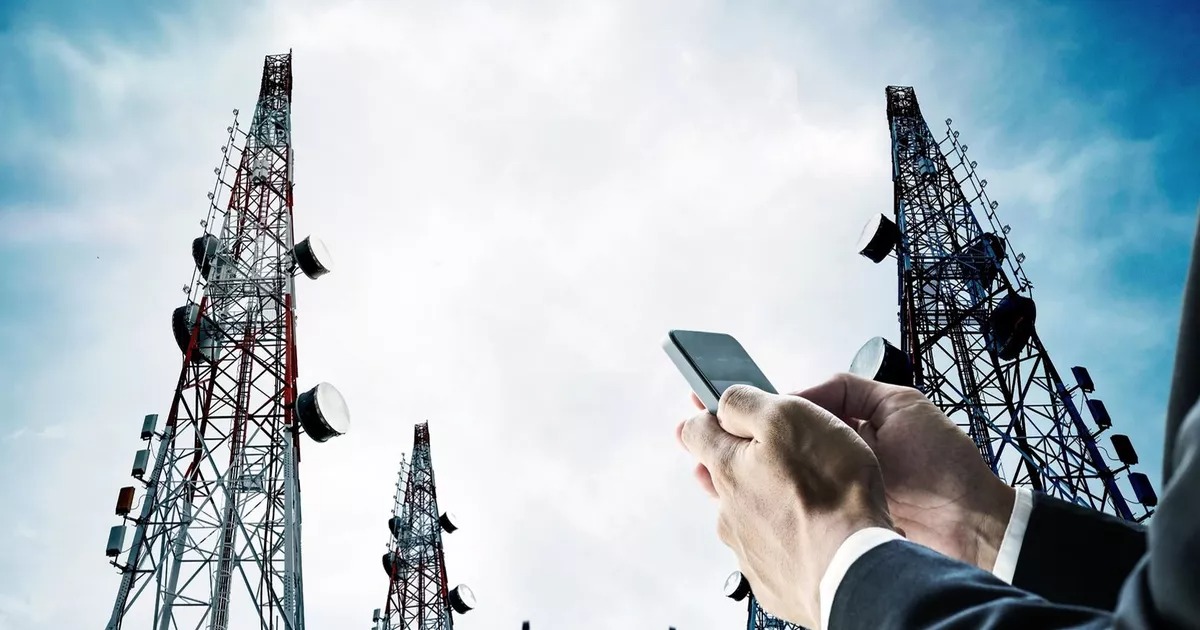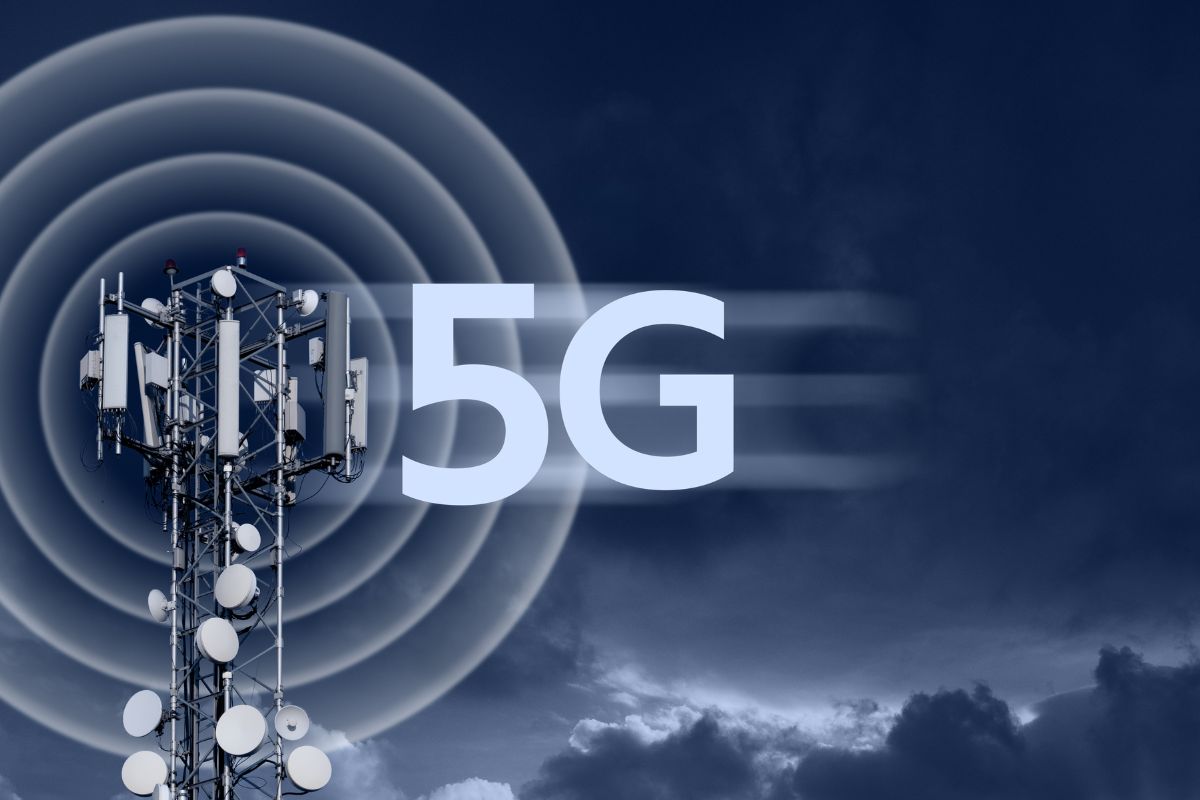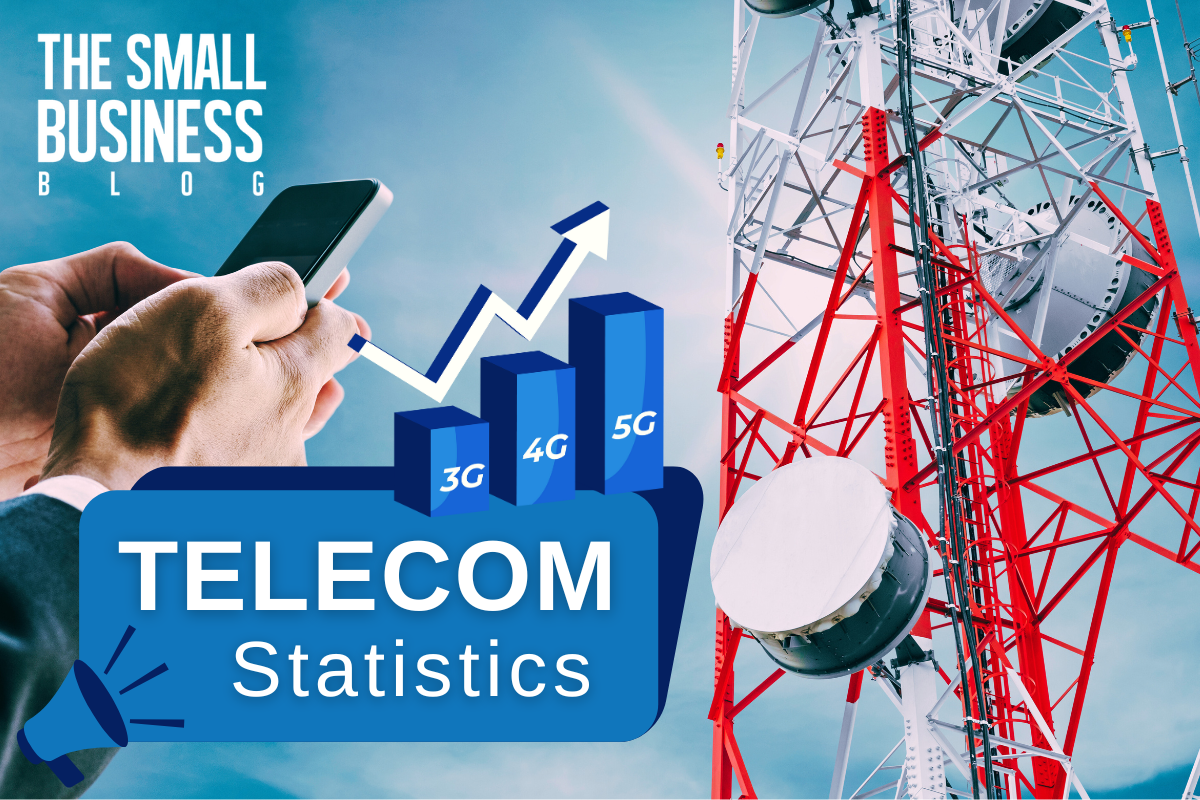Telecom, short for telecommunications, is a broad term that encompasses various technologies and services aimed at transmitting information over long distances.
In essence, it enables the exchange of voice, data, and multimedia across the globe, facilitating seamless communication between individuals, businesses, and nations.
The realm of telecom statistics is a treasure trove of insights, revealing the astonishing growth and transformation of the industry.
Post Contents
- 1 Key Statistics
- 2 Telecom Statistics: Trends and Figures in the Telecommunication Sector
- 3 Challenge to Huawei’s Success
- 4 Drivers of the Asia Pacific Market
- 4.1 6. Finns Use an Average of 35 Gigabytes of Data per Month
- 4.2 7. Communication Services Forecasted to Be the Largest IT Sector Expenditure in 2023 ($1.4 Billion)
- 4.3 8. Monthly Data Traffic via Fixed Wireless Access (FWA) Reaches 24.4 Exabytes
- 4.4 9. In 2022, Global Mobile Network Smartphone Subscriptions Reached 6.6 Billion
- 4.5 10. 1.34 Billion Connections to 5G Networks Were Recorded in 2022
- 5 Conclusion
- 6 Sources
Key Statistics
- Telecom services hold an estimated worth of $1.6 trillion
- The leading telecom company worldwide is China Mobile, valued at $189 billion in market capitalization
- The brand value of Huawei in the global telecom infrastructure industry is $71.2 billion
- Mobile data services accounted for over 37% of the global telecom services market
- The Asia Pacific region captured more than one-third (33%) of the global telecom services market
- The forecast for 2023 indicates that $1.4 billion will be spent on communication services, making it the highest-spending category in the IT sector
- The average data usage per month among Finns is 35 gigabytes
- Monthly data traffic through Fixed Wireless Access (FWA) reaches 24.4 exabytes
- The global count of mobile network smartphone subscriptions reached 6.6 billion by the end of 2022
- In 2022, there were 1.34 billion instances of connections to 5G networks
Telecom Statistics: Trends and Figures in the Telecommunication Sector

1. Telecommunication Services Are Valued at $1.6 Trillion
Telecommunication services play an integral role in connecting people and businesses worldwide.
The global telecommunication services market has witnessed remarkable growth in recent years, with its size reaching $1.6 trillion in 2021.
What’s even more impressive is that the market is projected to surge to an astounding $2.5 trillion by 2031, representing a significant CAGR of 5.1% from 2022 to 2031.
Telecommunication services have become the lifeblood of the modern world, emphasizing the seamless exchange of information, facilitating the growth of industries, and propelling technological advancements.
As a result, the demand for these services has skyrocketed, especially with the ever-increasing adoption of smartphones, the Internet of Things (IoT) devices, and the ongoing expansion of 5G networks.
(Allied Market Research)
2. China Mobile Is the Leading Telecom Company Worldwide with a Market Cap of $189 Billion
Market capitalization, a key indicator of a company’s overall value and investor confidence, has become a definitive metric to gauge their standing and influence on the global stage.
Among several telecommunication companies, a select few have managed to distinguish themselves with remarkable growth, ambitious expansion plans, and a relentless drive to stay ahead of the curve.
The following data shows the leading companies worldwide by market capitalization:
- China Mobile has a market capitalization of $189 billion
- T-Mobile US has a market capitalization of $180 billion
- Comcast has a market capitalization of $169 billion
- Verizon has a market capitalization of $163 billion
- AT&T has a market capitalization of $125 billion
- Deutsche Telekom has a market capitalization of $118 billion
- Nippon Telegraph & Telephone has a market capitalization of $105 billion
- American Tower has a market capitalization of $95 billion
- China Telecom has a market capitalization of $82 billion
(Statista)
3. The Most Valuable Brand in the Global Telecom Infrastructure Industry Worth $71.2 Billion is Huawei
2022 witnessed Huawei solidify its position as the most valuable brand in the industry, with a brand value of $71.2 billion.
Remarkably, this feat was achieved despite the persisting controversies surrounding the security of its network.
Huawei’s dominance in the market has been nothing but impressive, with its brand value surpassing its closest competitor, Cisco, which ranked second with a brand value of $26.6 billion.
This considerable gap between the two giants highlights Huawei’s resolute foothold in the global telecommunication infrastructure landscape.
Challenge to Huawei’s Success
However, it is important to acknowledge that Huawei’s success has not been without challenges.
The company has faced ongoing scrutiny and raised eyebrows over its network security practices.
Such concerns have led several countries to impose restrictions on Huawei’s involvement in their national telecom infrastructures.
Despite these setbacks, Huawei’s brand value managed to soar above its competitors, signifying the resilience and appeal of its offerings.
(Statista)
4. Mobile Data Services Accounted for Over 37% of the Global Telecom Services Market
In the landscape of the global telecom services market, mobile data services have emerged as the undeniable powerhouse, capturing an impressive share of over 37.0% in 2022.
This substantial figure underscores the undeniable importance of mobile data services, fueled by the surging adoption of smartphones and the escalating need for fast, reliable broadband services, spanning both corporate and residential domains.
The rise of mobile data services can be attributed to the abundant presence of smartphones, which have become an integral part of modern life.
These pocket-sized devices have transformed into indispensable companions, enabling users to stay connected, informed, and entertained round the clock.
As the number of smartphone users continues to soar worldwide, so does the demand for seamless and efficient data services.
(Grand View Research)
5. Asia Pacific Region Captured More Than 33% of the Global Telecom Services Market Share

The Asia Pacific region has proven to be a dominant force in the global market, capturing an impressive 33.0% share in 2022.
The future looks even brighter for the region, as it is projected to maintain a robust growth trajectory with a Compound Annual Growth Rate (CAGR) of 7.0% from 2023 to 2030.
This anticipated expansion is set to make the Asia Pacific region the top destination for new mobile subscribers, attracting over 50% of them by the end of the next decade.
Drivers of the Asia Pacific Market
China, Japan, and India have emerged as formidable players driving the Asia Pacific’s market ascent.
China, in particular, stands out with its staggering number of internet users, surpassing 1.02 billion in February 2022.
This remarkable figure is more than three times the number of internet users in the United States, which ranked third with just over 307 million users.
India also boasts a substantial number of internet users, securing the second-highest position in the same period.
(Grand View Research)
6. Finns Use an Average of 35 Gigabytes of Data per Month
According to recent statistics, US residents exhibited an average monthly data consumption of 7.6 gigabytes per user in 2021.
This moderate figure, though substantial, reflects a more conservative approach to mobile data usage compared to users from other countries.
Finns, on the other hand, emerged as global recorders in this area, exceeding expectations with an average of more than 35 gigabytes of data used per month.
Their appetite for data highlights the nation’s tech-savviness and their seamless integration of mobile technology into everyday life.
(Tridens)
7. Communication Services Forecasted to Be the Largest IT Sector Expenditure in 2023 ($1.4 Billion)
Companies and industries worldwide are keen to gain insights into the areas where investments are expected to surge, enabling them to strategically align their resources and capitalize on emerging opportunities.
At the forefront of the IT spending landscape is the communication services segment, set to witness the highest expenditure.
Let’s delve into the segment-wise breakdown of the forecasted IT spending for 2023:
- $1.469 billion is spent on communication services globally
- $1.362 billion is spent on new technologies globally
- $1.358 billion is spent on IT services globally
- $880 million is spent on softwares globally
- $735 million is spent on devices globally
- $216 million is spent on data center systems globally
(Statista)
8. Monthly Data Traffic via Fixed Wireless Access (FWA) Reaches 24.4 Exabytes
Under telecommunications, one technology stands out for its exceptional growth and transformative impact on global data traffic – Fixed Wireless Access (FWA).
This telecommunications marvel has been making waves, revolutionizing how we connect to the internet and transforming underserved regions into hubs of digital opportunity.
The statistics speak volumes about FWA’s effectiveness.
In 2022, monthly data traffic via FWA surpassed 24.4 exabytes, a remarkable leap from the 15.6 exabytes recorded in 2021.
Experts predict that this surge is only the beginning, projecting FWA’s monthly data traffic to soar to 143 exabytes by 2028.
This unprecedented growth showcases FWA’s potential to redefine the telecommunications landscape.
(Statista)
9. In 2022, Global Mobile Network Smartphone Subscriptions Reached 6.6 Billion
In recent statistics, the worldwide count of mobile network smartphone subscriptions reached 6.6 billion by the conclusion of 2022.
This milestone has undoubtedly cemented the smartphone’s position as an essential tool for modern communication and connectivity.
Mobile networks have played a pivotal role in this exponential growth, making it possible for individuals from remote areas to access the internet and connect with the global community.
Additionally, the increasing popularity of mobile applications, ranging from social media and entertainment platforms to productivity tools and e-commerce, has further fueled the demand for smartphones.
(Tridens)
10. 1.34 Billion Connections to 5G Networks Were Recorded in 2022

As the world embraces cutting-edge connectivity, the demand for 5G-enabled smartphones has surged steadily, driving the market forward despite prevailing challenges.
Unlike their 4G counterparts, these next-gen devices promise unprecedented speeds and reliability, catering to the desires of consumers for fast data transfers, enhanced streaming, and immersive experiences.
Amidst the chaos of component scarcity, manufacturers have made valiant efforts to sustain the production and distribution of 5G smartphones, ensuring consumers continue to enjoy the latest in telecommunications technology.
Fortunately, it seems that the transition to 5G networks has remained on track, with an estimated 1.34 billion connections worldwide in 2022.
(CCS Insight)
Conclusion
The global telecommunication services market is a dynamic and ever-evolving landscape that plays a pivotal role in connecting people and businesses worldwide.
With a staggering valuation of $1.6 trillion in 2021 and projected growth to reach an astounding $2.5 trillion by 2031, it is evident that telecommunication services have become the lifeblood of the modern world.
The telecom statistics presented reflect the continued growth and impact of the telecommunication industry on a global scale.
As technology continues to evolve, the telecommunication sector will play a crucial role in shaping our interconnected future, bridging gaps, and empowering individuals and businesses alike with seamless communication and data connectivity.






























